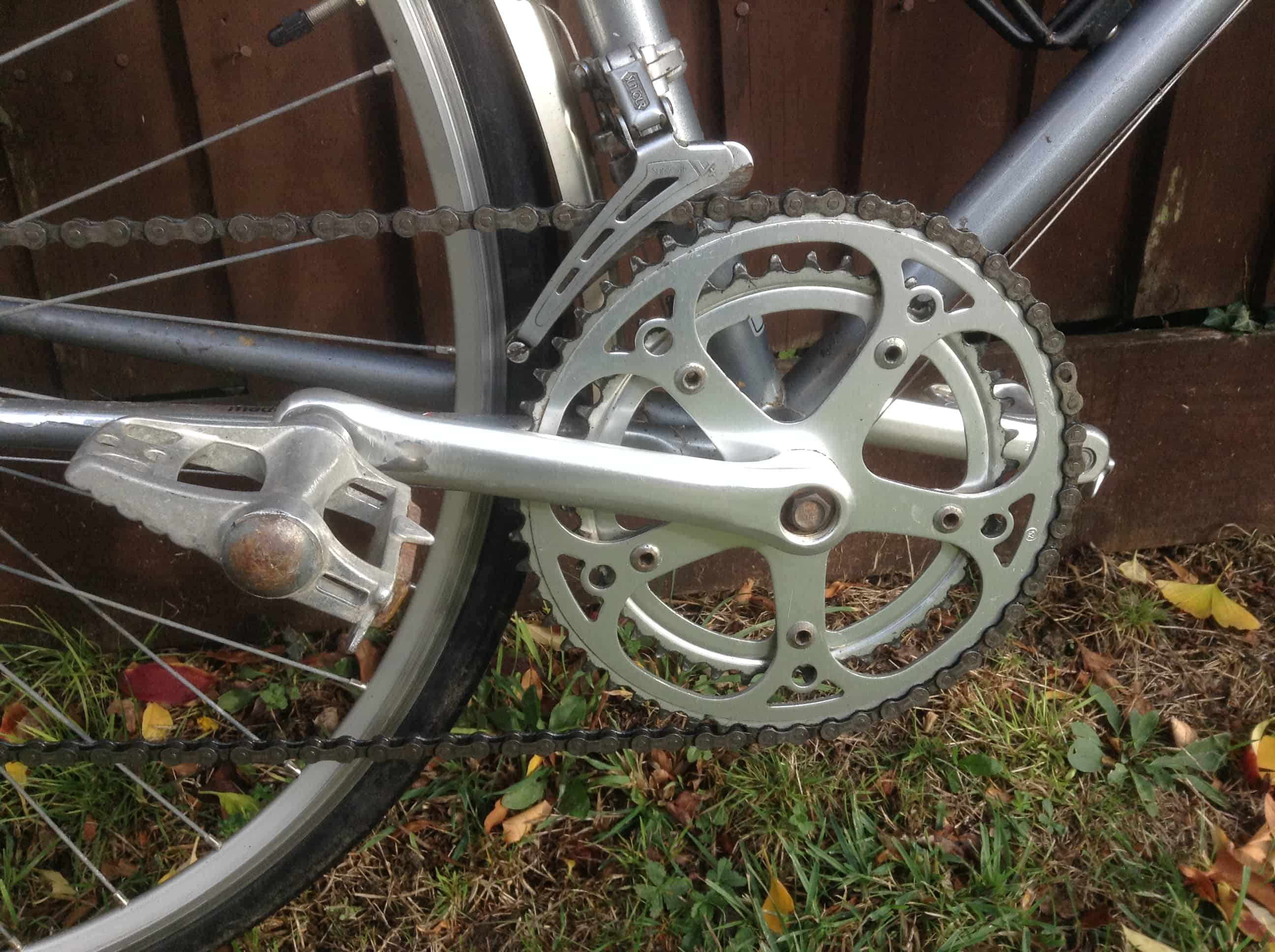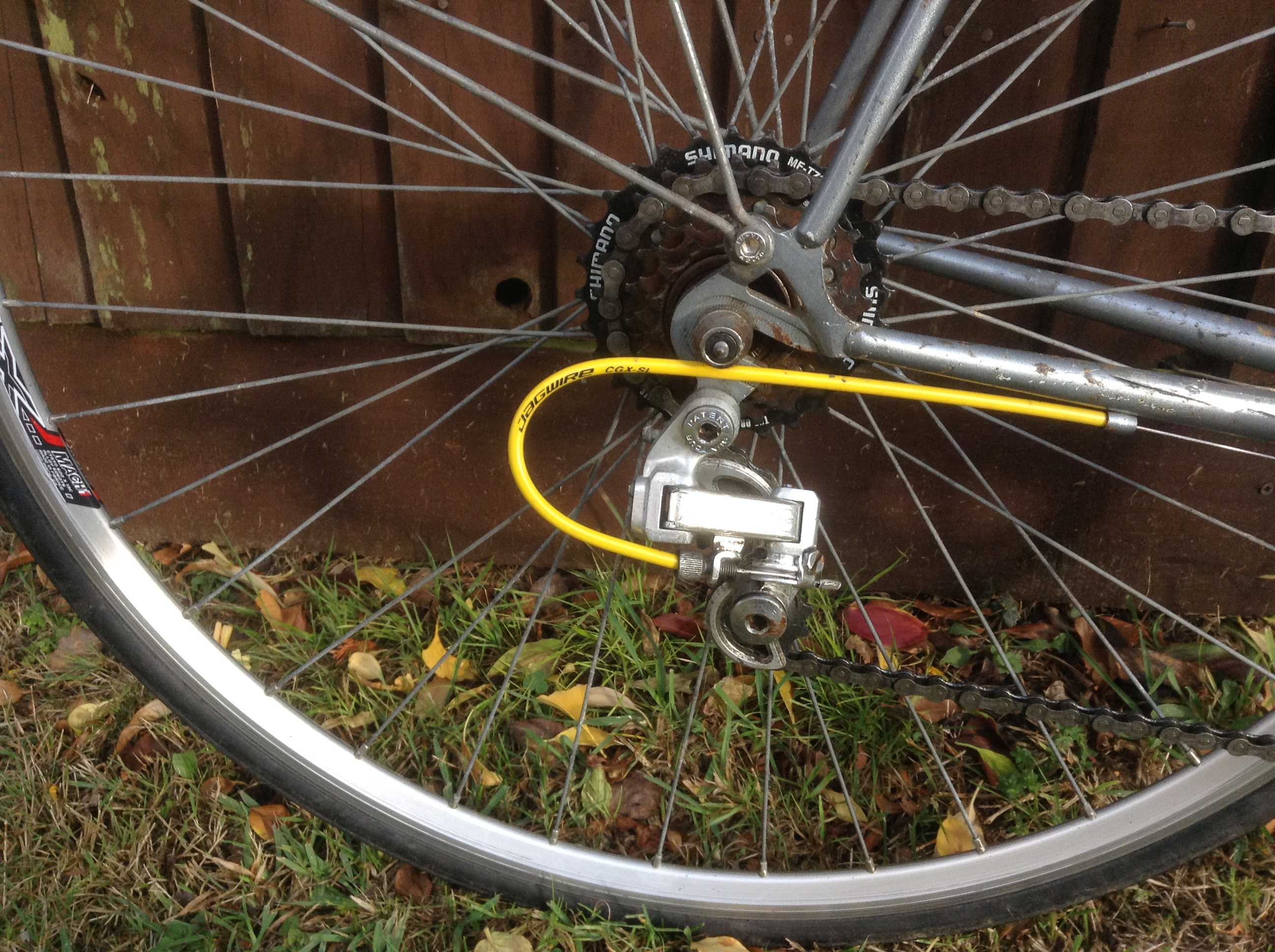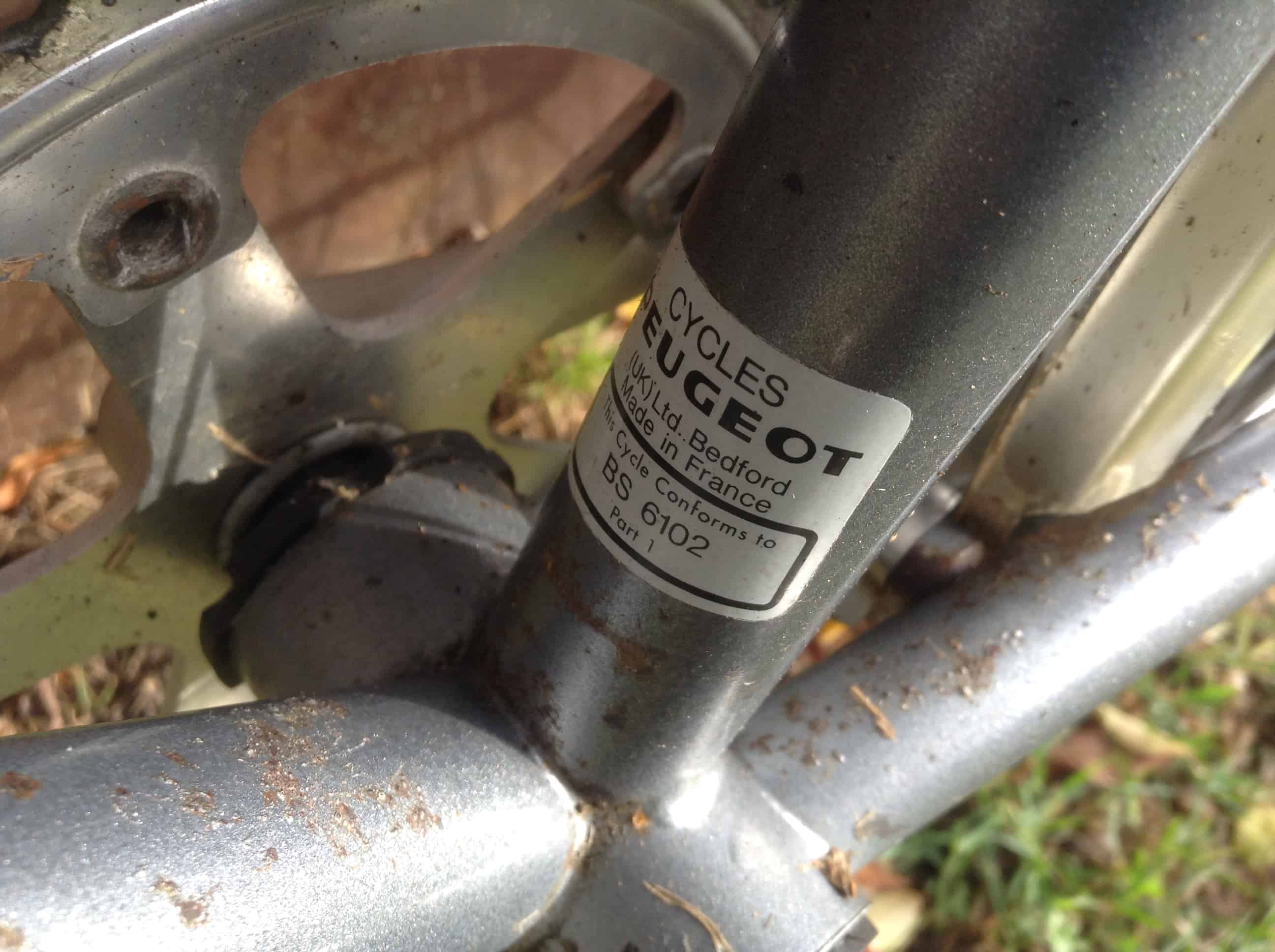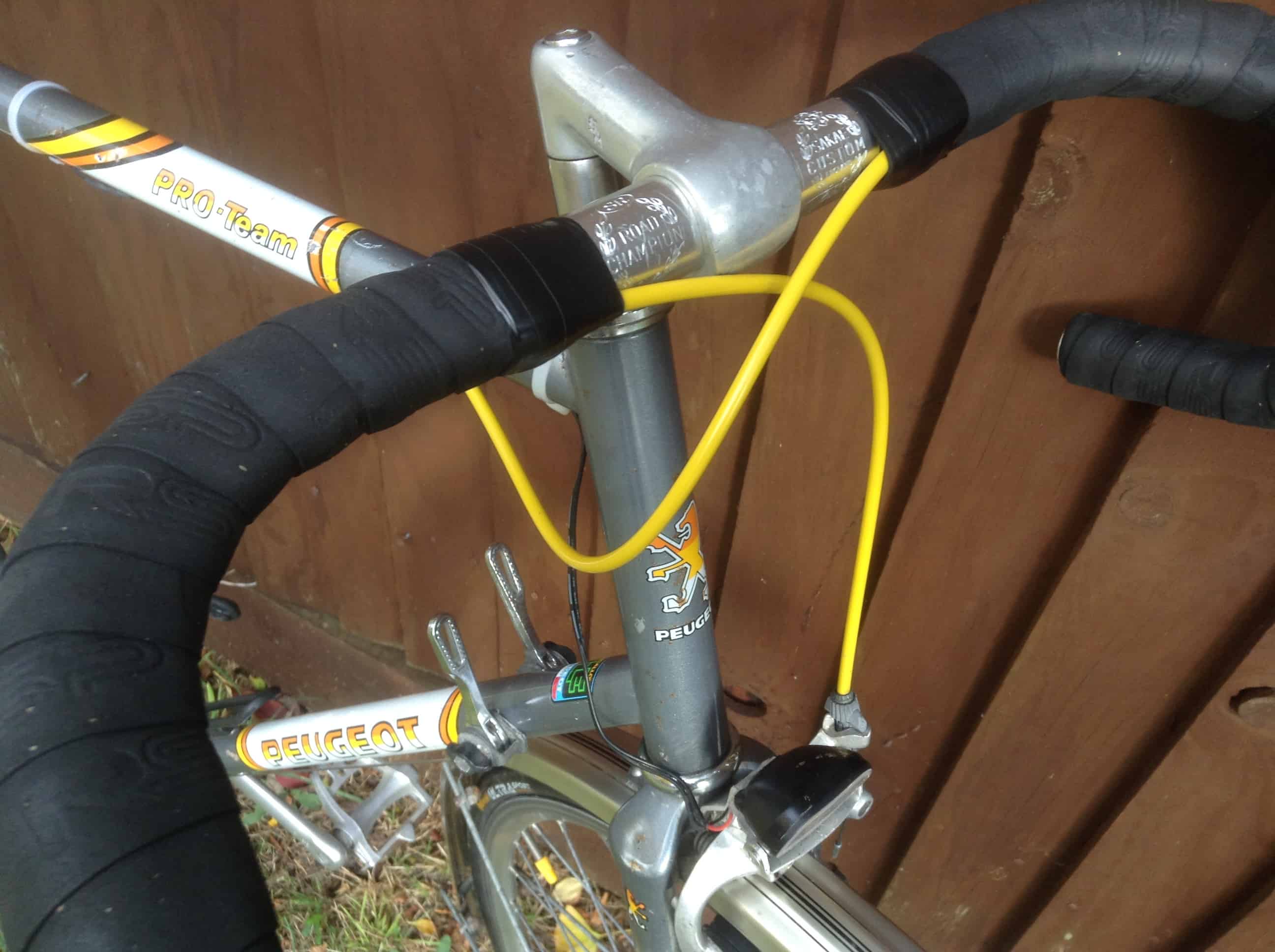What’s in a Name?
Whenever the word “professional” is used for a model of a road bike, you expect something really good. Am I wrong? I think I’d expect a replica of a professional team bike, like the old Raleigh Professional and the similarly named Holdsworth. But often names don’t accurately represent a bike at all, and I think bike manufacturers became rather blasé about the nomenclatures of their models after the 1970’s.

An Entry Level Bike
Hence, “competition” and “professional” became ubiquitous names, and like this particular Peugeot, no longer had anything to do with professional or team bikes. Yes indeed, right here is a great example: this late 1980’s “pro” bike was never in the front pages of Peugeot’s bike catalogue; rather, it was an entry-level road bike with Peugeot’s proprietary HLE tubing. This one has been a bit customised, check out the front light with a cable running under the saddle where a 9 volt battery sits!

HLE Tubing

Ian’s Bike
Strangely, my brother in law Ian had exactly the same bike, same size, same colour, same year. I say had, but I really should say has, because it still stands in his shed after all these years. However, his Pro Team is now unrideable as one of the tubes broke a year back, which must have been really disappointing for him. He’d been given the bike as a present when he was a schoolboy, and was riding it regularly until the metal fatigued and broke.

Gear Shifting
Gear shifting on this bike was basic stuff, the Suntour Vx derailleurs and shifters friction shifting the 12 gears as you’d expect at this basic level. Suntour Vx was a group that came out in 1978/79, so by the time this bike was built in the late 1980’s, perhaps 1989, the derailleurs were looking dated. Indeed, this was just as STI shifting was taking hold of the market and indexed shifting changed everything. So, in my mind, this Peugeot was looking back to the past rather than into the future. That said, Suntour Vx were reliable derailleurs, decently lightweight but incredibly bland looking.

Suntour Vx
The Build
Not all of this bike is original, most notably the wheelset which replaced the Maillard Helicomatic hubs and Weinmann 700c rims. This modern wheelset is rather generic and uninteresting, with its cylindrical hubs and aero type 6061 rims. However, the bike has kept its Sakae 52/42 crankset ( though without the dust caps ), and the CLB brakes and Saccon levers survived, though the rather gaudy yellow cables are recent additions. The biggest misfit of all is the narrow saddle, taken from a recent Giant road bike, and out of place on this bike.

On the Road
This is a big bike, 60cm from centre to the top of its top tube, with a long top tube length of 61cm. I’ve ridden similarly sized bikes before, but I really think that if you’re going to buy such a big bike, its important to choose one with light tubing. 60 x 61cm is a lot of steel to move, and with its HLE frame, this Peugeot weighs in at around 26lbs, so it never really felt quick and lively on the road. Instead, it offered a solid, sturdy and comfortable ride, gear shifting required careful trimming and braking distance was poor compared to a modern road bike.

Later Peugeots
Peugeot was in decline by the time this bike was built, even though the company was implementing new cost-cutting technology like internally lugged tubes, as well as HLE and Carbolite steel frames at this cheaper end of the market. Undoubtedly, Peugeot bikes were still an attractive proposition in 1989, not just because of the pedigree and prestige of the name but also because they simply made desirable bikes. This Pro Team is an example of just that: it was a bike of modest parts, but it was still a Peugeot, and there’s always something cool about that.




I had one of these and the drive side chain stay broke, is this the same tube that broke on your brother’s?
Hi, my brother in law’s frame broke at the bottom of the seat tube, where it meets with the bottom bracket. His did last for about 25 years though, what about yours?
Here’s another one with a broken drive-side chainstay:
I had one of the earlier Carbolite 103 ones, which filled up with water (poorly-fitting seatpost) and went rusty inside, so it broke under load at the bottom of the seat tube. I reckon they should all be filled up with oil before use. Drained out afterwards obviously.
I bought another one, because they are far better than their entry-level status. Apart from the extra 500g or so, they are a match for any frame- the geometry manages to be fast and comfortable, somehow. Mine have been 21.5″ and 23.5″, and I could get comfortable on both.